Powerful, long-duration X2.2 solar flare erupts from geoeffective AR 2673
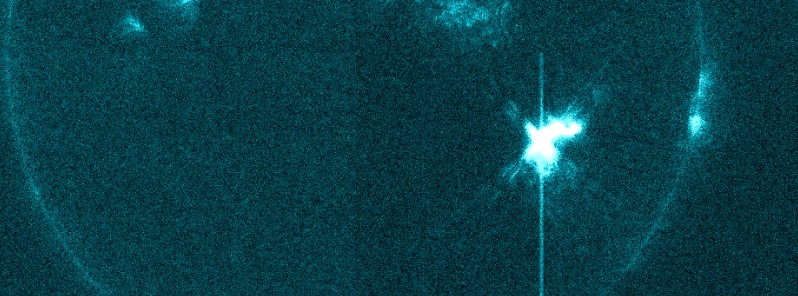
A powerful, long-duration solar flare measuring X2.2 at its peak time erupted from geoeffective Active Region 2673 at 09:10 UTC on September 6, 2017. The event started at 08:48 and ended at 09:59 UTC. This is the first X-class solar flare since May 5, 2015.
There were no radio signatures that would suggest a Coronal Mass Ejection (CME) was produced during this event.
Additionally, the event was associated with a 10cm Radio Burst lasting 6 minutes with a peak flux of 569 sfu.
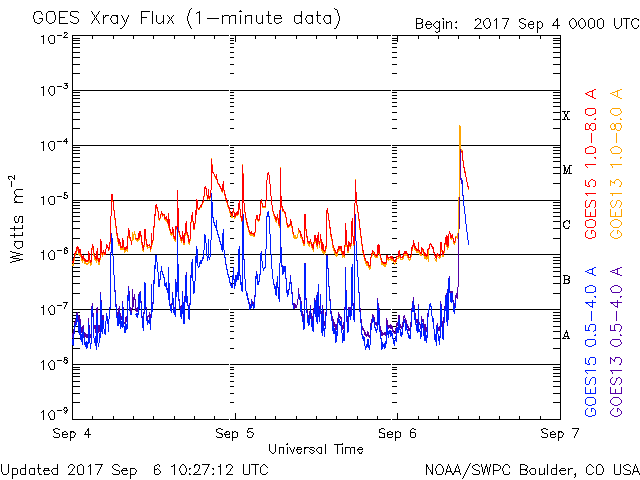
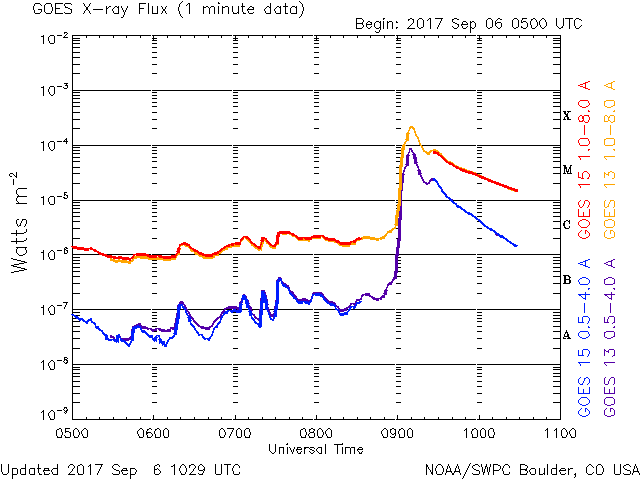
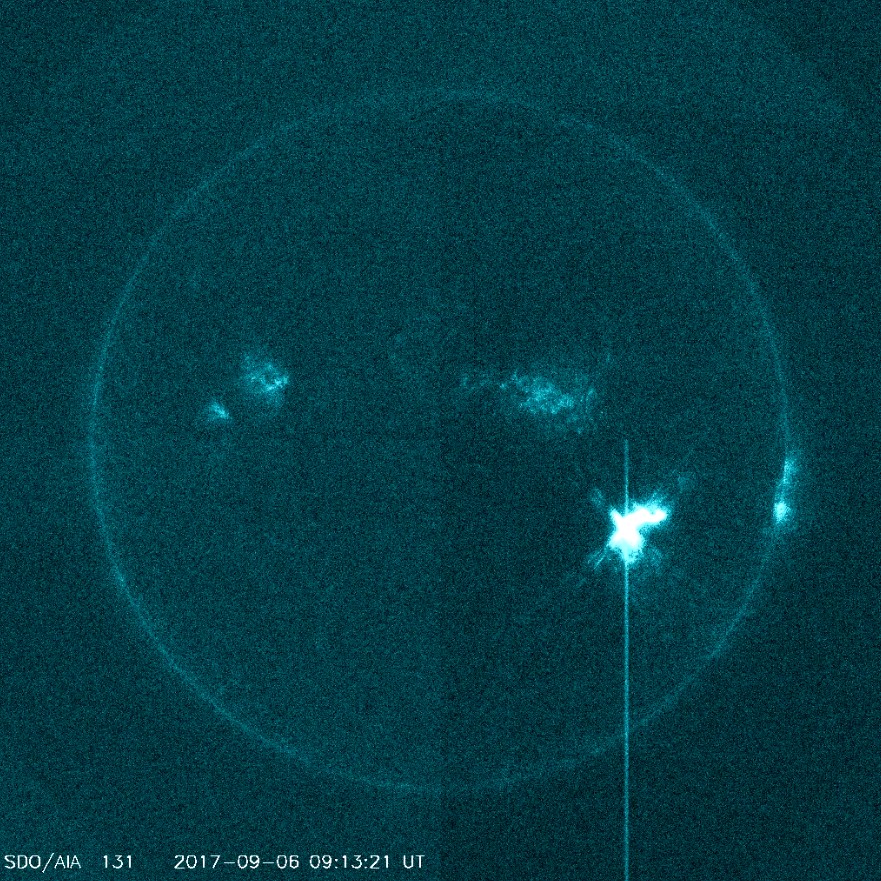
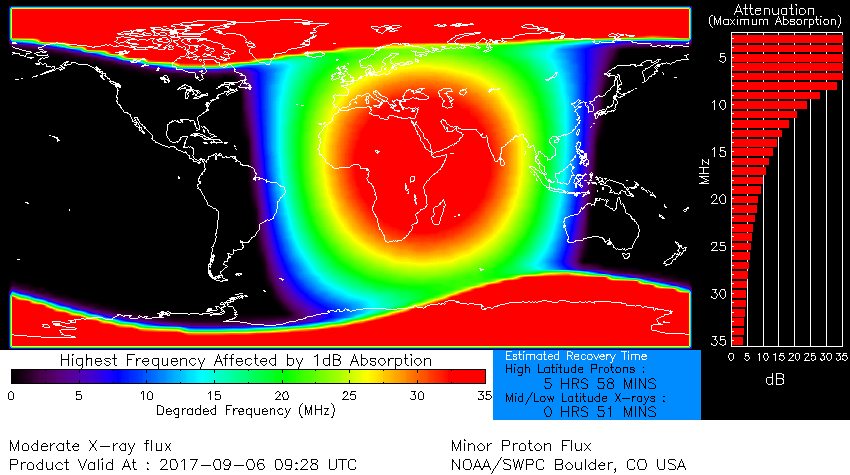
Just a couple of hours later, the same region produced a major X-class solar flare – X9.3, the strongest solar flare of the current solar cycle.
Read more about it: Major X-class flare: X9.3 from geoeffective AR 2673, CME produced
SWPC alerts
Space Weather Message Code: SUMX01
Serial Number: 114
Issue Time: 2017 Sep 06 1008 UTC
SUMMARY: X-ray Event exceeded X1
Begin Time: 2017 Sep 06 0848 UTC
Maximum Time: 2017 Sep 06 0910 UTC
End Time: 2017 Sep 06 0959 UTC
X-ray Class: X2.2
Optical Class: 2b
Location: S08W33
NOAA Scale: R3 – Strong
Potential Impacts: Area of impact consists of large portions of the sunlit side of Earth, strongest at the sub-solar point.
Radio – Wide area blackout of HF (high frequency) radio communication for about an hour.
***
Space Weather Message Code: SUM10R
Serial Number: 696
Issue Time: 2017 Sep 06 0934 UTC
SUMMARY: 10cm Radio Burst
Begin Time: 2017 Sep 06 0903 UTC
Maximum Time: 2017 Sep 06 0904 UTC
End Time: 2017 Sep 06 0909 UTC
Duration: 6 minutes
Peak Flux: 459 sfu
Latest Penticton Noon Flux: 121 sfu
Description: A 10cm radio burst indicates that the electromagnetic burst associated with a solar flare at the 10cm wavelength was double or greater than the initial 10cm radio background. This can be indicative of significant radio noise in association with a solar flare. This noise is generally short-lived but can cause interference for sensitive receivers including radar, GPS, and satellite communications.
Featured image: X2.2 solar flare at 09:13 UTC on September 6, 2017. Credit: NASA/SDO AIA 131

Commenting rules and guidelines
We value the thoughts and opinions of our readers and welcome healthy discussions on our website. In order to maintain a respectful and positive community, we ask that all commenters follow these rules.